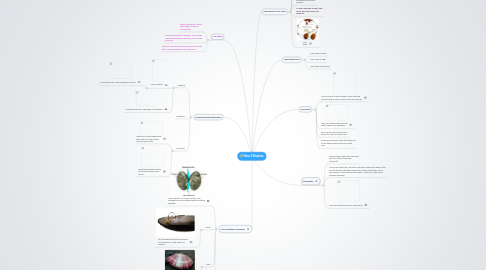Hour 2 Bivalves
by Karla Lockman


1. Internal/External Anatomy
1.1. Shell consist of 2 similar, convex, oval elongate valves and attach and articulated together.
1.2. Teeth
1.2.1. At the hinge the teeth are anterior and posterior can be absent or present.
1.3. Shell
1.3.1. shell is covered in thick skin and vary in colors.
1.4. Systems
1.4.1. complete digestive tract, open circulatory system, reduced nervous system, excretory and reproduction organs
2. Circulation
2.1. Open Circulatory System that bathes organs in hemolymph.
2.2. The hearthas three chambers: two auricles receiving blood from the gills, and a single ventricle
2.3. ventricle muscular pumps hemolymph into the aorta, and through the rest of the body
3. Feeding/Digestion/Excretion
3.1. Feeding
3.1.1. Filter Feeders
3.1.1.1. Food gets stuck in the organism's mucus
3.1.2. A few bivalves are scavengers or predators
3.2. Digestion
3.3. Excretion
3.3.1. Waste from the bladder exits the body from the mantle cavity/Pallial Cavity
3.3.2. Waste leaves the posterior end at the suprabrachial cavity.
